 Sunday/Weekend
Sunday/Weekend

 |
| Nguyễn Tuấn Khanh wears an 'áo dài' in Thủy Xuân incense village in Huế City. Huế was one of his favourite destinations in his Việt Nam tour with the traditional long dress. Photos courtesy of Nguyễn Tuấn Khanh |
Thanh Hà
A young traveller with a love of the Vietnamese national dress áo dài, Nguyễn Tuấn Khanh combined these elements on a remarkable journey in which he travelled 8,000km throughout the country wearing the traditional long dress and made the photo album Tự Hào Áo Dài Việt (Proud of Vietnamese Áo Dài).
“Travelling is my passion and in my blood. I am interested in trekking, camping and travelling by motorbike,” Khanh told Việt Nam News.
“I and some friends made a plan to tour through Việt Nam in 2020 as a milestone of our youth. However, we could only do it this year for various reasons.”
They wanted to discover Việt Nam’s nature and culture and record all their memories on camera. In their list, the ancient royal capital city of Huế was a must. Photos taken in Huế were made more beautiful with the traditional áo dài.
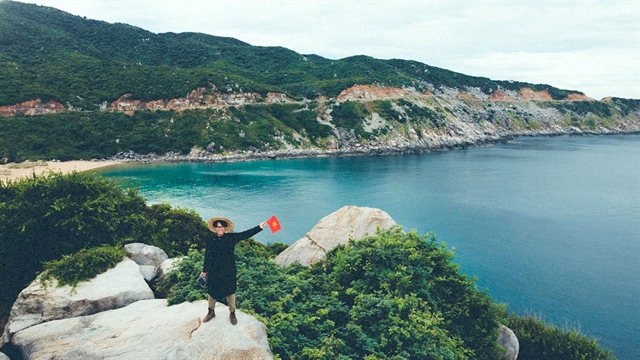 |
| Nguyễn Tuấn Khanh waves a flag at Cape Đại Lãnh in Phú Yên Province. |
“Then I thought I should wear áo dài in other cities and provinces too. So the traditional costume became my special companion in my memorable trip,” said Khanh, who was born in Bà Rịa Vũng Tàu and lives in HCM City.
The 24-year-old took three sets of áo dài: a classical one in black, a grey áo tấc (an old-style five-flap dress with large sleeves) and an innovative, more modern one.
The group started from HCM City to the Central Highlands, the Central region, and the North. On their return, they drove along the coastal route of the Central area.
Over 40 days, starting from late June and ending in August, Khanh visited Hội An, Huế, Quảng Ninh, Hà Nội, Điện Biên and Hà Giang among 40 other cities and provinces.
“I love the black one the most because of its traditional style. Moreover, in my home town in Long Sơn Commune, Vũng Tàu City, the black áo dài has its special position in the local populace’s spiritual life and culture,” said Khanh, who is a part-time tour guide and event planner.
“The black áo dài is an indispensable costume in every family in Long Sơn, especially for those who follow the Ông Trần religion. It is a must-wear costume on holidays and Lunar New Year for local residents, and souvenirs for tourists visiting our land.”
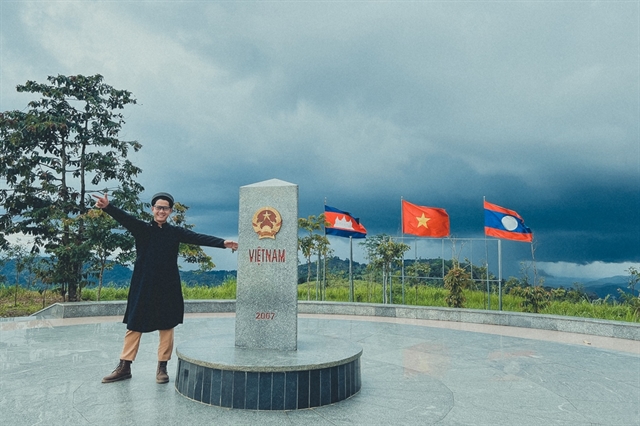 |
| Nguyễn Tuấn Khanh stands at Việt Nam's boundary marker at Indochina's tri-border area in Kon Tum Province. |
Every night, Khanh made a plan for the next day, choosing places to visit. He then prepared his áo dài and placed it on top of the backpack so that he could easily take them out and change whenever he wanted to take a photo.
“I visited the most exciting and impressive places and unique venues to take photos with the áo dài," he said.
“Normally, it was easy to take photos. Just pose and click, and then here you are. But I also tried to take pictures from risky positions like the peak of a mountain or the top of a steep slope. Wearing áo dài to get to these places was challenging, but I made it.”
Despite having two years to prepare, Khanh and his friends still met many problems. They faced scorching weather in Quảng Ngãi, slippery slopes in Điện Biên and a dangerous suspension bridge in Đà Lạt. They also experienced big storms and landslides and even got lost.
“Despite many challenges, we finally reached Điện Biên Province’s A Pa Chải Village, which is the westernmost point of Việt Nam. We also admired Mù Cang Chải’s terraced fields, a national heritage site in Yên Bái," Khanh said.
“No words can describe them, and no photo can show how stunning and peaceful they were. Difficulties and fatigue seemed to disappear. It was worth all the trouble to be there.”
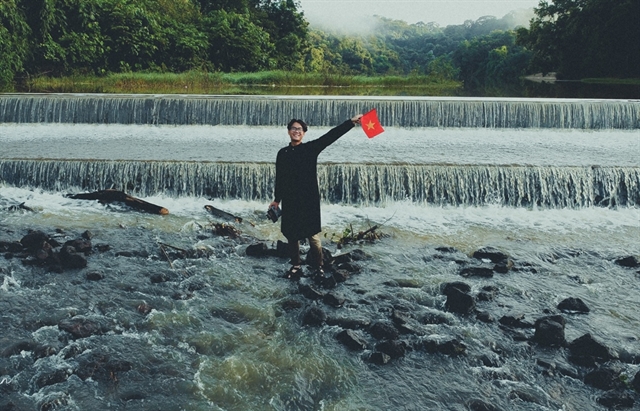 |
| Nguyễn Tuấn Khanh stands at Tà Lài Spillway in Đồng Nai Province. |
Việt Nam was so beautiful that he changed his plan. Initially, he planned to tour for 30 days, but he extended it to 40 because there were so many must-visit places he needed more time.
Khanh said the photos and videos he posted on Facebook each day received great feedback.
"People were impressed with the magnificent scenery. They felt touched seeing a young man in the áo dài proudly waving the national flag in many heritage sites and cultural spots," he said.
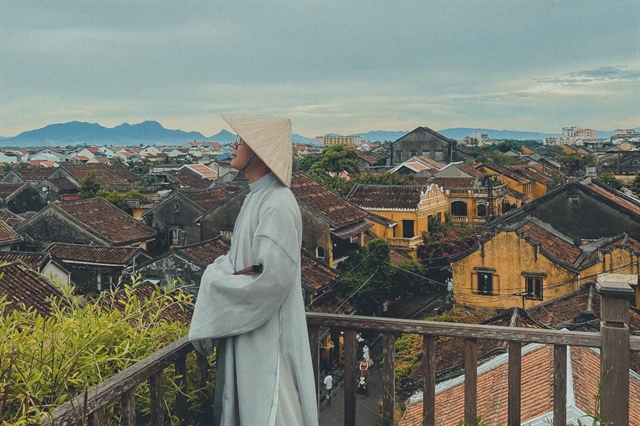 |
| Nguyễn Tuấn Khanh is seen on a balcony in Hội An ancient town. |
Many people offered financial support to Khanh for his journey, but the money was used to buy gifts for children in Tà Lài Commune, Đồng Nai Province, and a centre for orphans in HCM City when he returned home.
Weeks after his trip, Khanh is still excited and has bigger plans with the national costume.
“I always feel happy and proud wearing the long dress. I believe my photo tour across the country will inspire people, especially the young, to respect, love and use the áo dài more often, not only on holidays,” he said.
“I hope my photos help publicize the nation’s beauty, cultural values and positive energy, encouraging people to do more to discover Việt Nam. I will wear the áo dài and travel to more places, and if there is a chance, I will bring my dresses across the border to tell people that ‘Việt Nam’s áo dài is so beautiful!'”
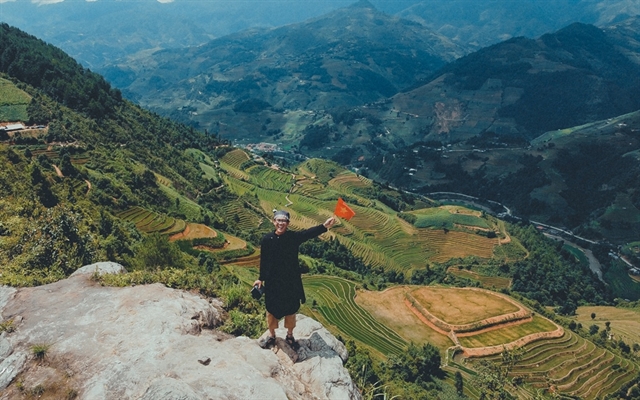 |
| Nguyễn Tuấn Khanh is on the unique Dinosaur Backbone Mountain in Mù Cang Chải, Yên Bái Province. |
Earlier, Khanh’s graduation photo collection also went viral. To celebrate his graduation, Khanh wore his graduation clothing and checked in at different cities and provinces such as HCM City, Vũng Tàu, Đà Nẵng, Hà Nội, and Đà Lạt.
“Saying has it that 'A day on the road gains you a basket full of wisdom'. It is true in my case. After each trip, I earned valuable treasure of new knowledge and experience,” he said.
“I get to understand new cultures and customs, savour delicious foods and make new friends. I can also publicize our country’s beauty, spread positive energy and encourage people to travel.” VNS
 |
| Khanh on Khau Cốc Chà Pass in Cao Bằng. |
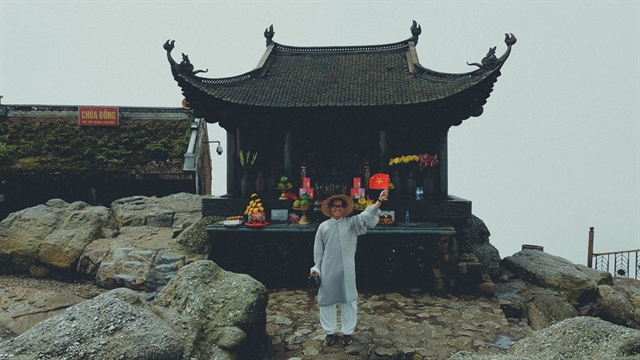 |
| Khanh checks in at the well-known Đồng Pagoda in Quảng Ninh Province. |
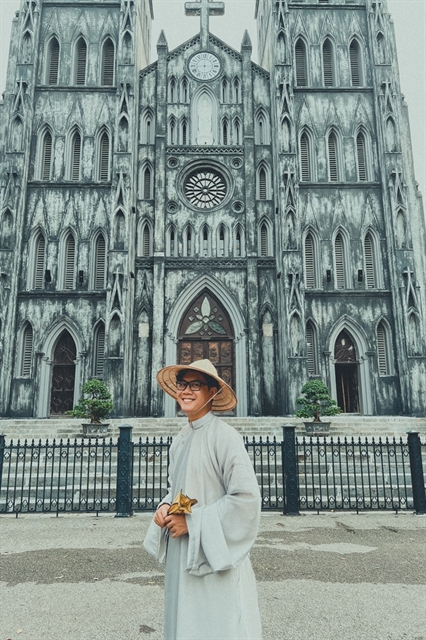 |
| He visits Hà Nội's St. Joseph's Cathedral. |
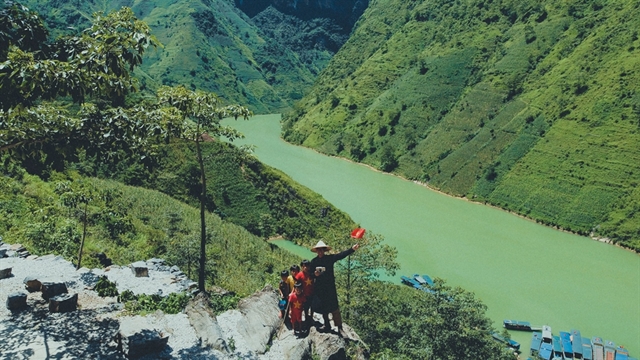 |
| Khanh and local children by Nho Quế River in Hà Giang. |
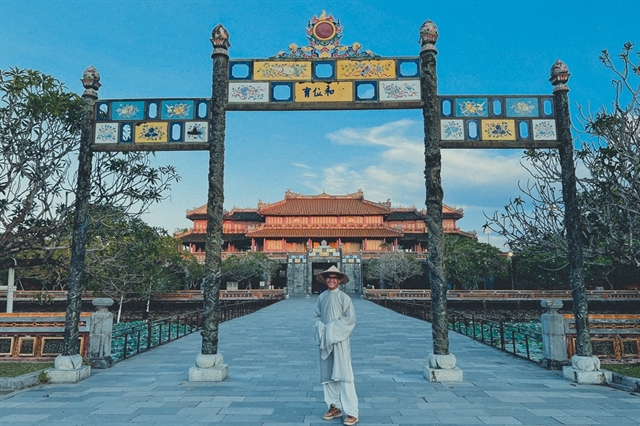 |
| Here he is in front of a royal building in Huế'. |
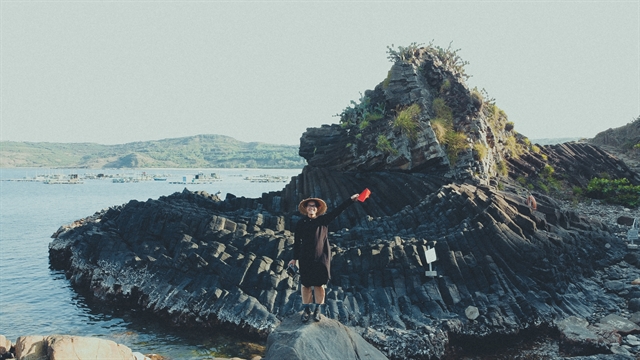 |
| He pictures the exceptional prismatic-shaped cliffs in Phú Yên. |
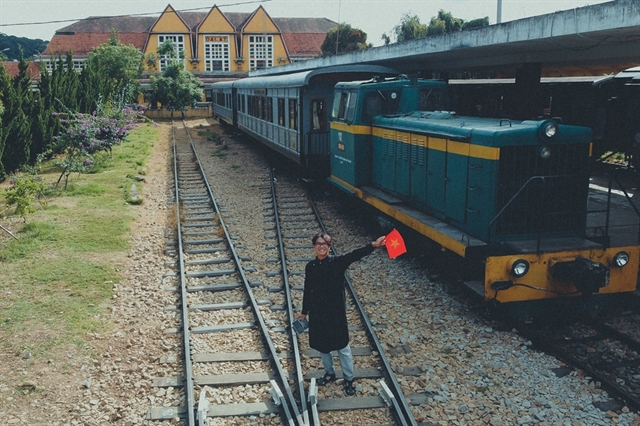 |
| Khanh next to the railway station in Đà Lạt. |




